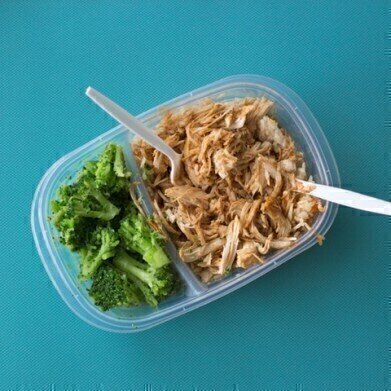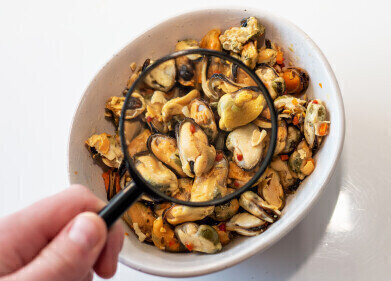GC-MS
Phthalates into Food — Chromatography Investigates
Sep 23 2016
Microwave cooking revolutionised cooking at the end of the last century — and is still very popular going off the amount of chilled cabinet space they take up in the supermarket. It is also a boon to heating up leftovers for a quick meal in midweek — saving time and money.
Whether you’ve bought a ready meal or are heating leftovers at home — there is usually plastic used somewhere in the chain. We think of plastics as stable and inert — one of the reasons they are used so extensively — but could there be some transfer from the plastic used to the food? Now a team from the University of Naples has used gas chromatography coupled with mass spectrometry (GC-MS) to investigate if components of plastic food packaging used with homemade meals transfer to the food when it is microwaved.
Plastic wrapping in the food?
The main source of plastic, or its components, in the human diet is through shop bought food and drinks. Many different polymers are used in the different plastics for food preparation, storage and microwaving. The polymer choice depends on the many different factors including the type of food, the storage conditions and the storage time or shelf life of the food.
Plastics are made from polymers with small amounts of additives depending on their proposed use. Plasticizers are a commonly used additive — adding flexibility to plastics, important when you want to create an air-tight seal on your storage box. Bisphenol A (BPA) is used in clear, hard plastics and phthalates — used to make soft and flexible plastic — are two additives commonly found in plastics. But both are believed to be endocrine disruptors, substances that mimic human hormones and are considered harmful. BPA is banned from children’s toys by the EU, such is the concern of scientists about its effect on human development.
What did they study
The researchers analysed several foods like pre-packed cheese, fish, meat and wines packaged in cartons. Using these ingredients, the team prepared some dishes including pasta, rice, chicken and vegetables that were cooked, cooled and stored in microwave containers made from polypropylene and polycarbonate plastics. The meals were then analysed before and after cooking in a microwave oven to test whether there was any migration of plastic additives to the food.
In a paper published in LWT – Food Science and Technology the researchers explain how they used GC-MS to study three different phthalates — 4-tert-octylphenol (OP), 4-nonylphenol (NP), bisphenol A (BPA) — and di(2-ethylhexyl)adipate (DEHA). The method they used was based on QuEChERS method — a method of sample preparation as discussed in the article, The Applications of QuEChERS Beyond Fruits and Vegetables.
The researchers found the phthalates and DEHA in the pre-cooked samples using the method they developed. They also found that there was no increase in concentrations after microwave cooking in the appropriate containers. They state that the QuEChERS method they have developed is suitable for investigating chemicals in packaged foods.
Digital Edition
Chromatography Today - Buyers' Guide 2022
October 2023
In This Edition Modern & Practical Applications - Accelerating ADC Development with Mass Spectrometry - Implementing High-Resolution Ion Mobility into Peptide Mapping Workflows Chromatogr...
View all digital editions
Events
Apr 28 2024 Montreal, Quebec, Canada
May 05 2024 Seville, Spain
May 15 2024 Birmingham, UK
May 19 2024 Brno, Czech Republic
May 21 2024 Lagos, Nigeria














